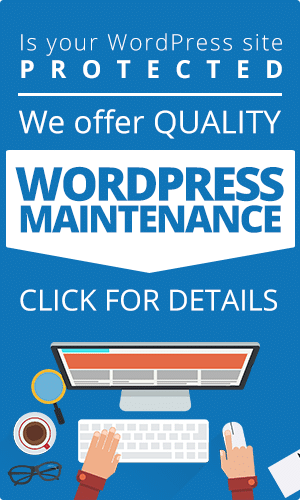Are words like CMS, KPI, and SEM like alphabet soup to you? Do you think ROI and SEO are only important for big businesses? Think again!
In a marketing-based world, even small businesses should know these abbreviations. Want to learn more? Here are 15 marketing acronyms you should know!
1. AIDA: Attention, Interest, Desire, Action
AIDA is used by markers in an attempt to motivate people to buy their product. So, in an ideal situation, your customer will go through each of these four stages in order.
First, you’ll want to get their attention by contacting them. You’ll let them know why your product is interesting, and why they should desire it. And finally, they’ll (hopefully) act upon your ad and buy the product.
While this approach won’t work in every situation, it’s always a great place to start.
2. B2B (vs. B2C): Business to Business (vs. Business to Consumer)
These marketing acronyms refer to types of businesses. If you’re marketing for a B2B client, you’ll be marketing to other businesses. Most B2B transactions happen behind the scenes and are based on recommendations.
B2C stands in contrast to B2B. This is the classic business model that markets to consumers that want to buy your goods or services.
3. BR: Bounce Rate
This refers to the number of customers that don’t take action. A high bounce rate is indicative of ineffective marketing. It can be used in reference to websites or emails.
If a user “bounces” off of your website, they leave without clicking on anything. If an email “bounces”, it means it didn’t reach the user’s inbox when you sent it.
4. CMS: Content Management System
This is a program that does what the name suggests: manages content. Think of websites like WordPress which allow you to create, edit, and manage your website’s content from a central base of operations. A CMS allows you to manage your website without ever accessing any HTML.
5. COS: Content Optimization System
This is like a CMS but on a wider scale. Not only can you manage your website, but you can also access email and social media marketing. You can use a COS to access various pieces of content that all have different purposes.
6. CPC (and PPC): Cost Per Click (and Pay Per Click)
In advertising, some services offer PPC, where you’ll pay each time someone clicks on your ad. The amount paid for a click is the CPC. So your total cost for a PPC campaign will be the CPC times the number of clicks.
Often, you can set up a daily budget so they’ll pull your ad once you get the desired number of clicks. It’s great because you only pay if the advertisement drives people to your website. But know that if one person clicks the same ad many times, you still are paying for each click, not for each person.
7. CPM: Cost Per Thousand
This is another common web pricing method. Every 1,000 times that an ad loads onto a web page, you’re charged a set amount. Again this does not distinguish between individuals. So if the same person loads your ad 50 times on the same page, that’s still 50 towards your total, not one.
So, why is it CPM and not CPT? M is the Roman numeral for 1,000!
8. CRM: Customer Relationship Management
This type of software allows you to better engage with your customers. You input each customer’s information and it tracks engagement and consumer behavior.
It helps your team stay on the same page about who has talked to who, and about what. It also helps you create a more strategic communication profile based on demographics and purchase history. Use CRM to keep customers, help with sales, and convert leads.
9. CRO: Conversion Rate Optimization
Yet another type of software, CRO takes an unbiased look at your websites, social media, and ads to try to better drive conversion. Here, conversion means converting prospective customers into actual customers. The software can perform testing that lets you determine your best campaign option.
10. CTA: Call to Action
CTA is the desired action in mind for that advertisement. You want to prompt the viewer to click, download, sign-up, attend, etc. Think of phrases like “learn more” or “visit us today”.
11. CTR: Click-Through Rate
Your CTR calculates how many people follow through with your CTA. It’s used to determine ad success.
To calculate CTR, you divide the number of views by the number of ad interactions and multiply by 100. Here, a higher percentage means a more successful ad.
12. KPI: Key Performance Indicator
These assess a business’s success or campaign goals. For example, your CTR would be a KPI of an advertisement campaign. If your goal is something else, use that KPI instead.
For example, if you’re running a brand awareness campaign, the number of people able to recognize your brand would be your KPI. Always make sure your KPI aligns with your campaign goals.
13. ROI: Return on Investment
This is another performance measurement that calculates the profit relative to the amount spent. You can calculate the ROI by subtracting the cost from the revenue. It can guide you to determine if a campaign was successful or if a campaign needs to end.
14. SEO: Search Engine Optimization
SEO is very important for business websites because without a good ranking, no one will ever find you. Here, we’re talking about organic results, not search engine advertisements. There are a variety of SEO techniques you can use to improve your website’s visibility.
And guess what? You’ll increase your visibility without paying those search engines anything at all! If you aren’t quite sure how to do this, consider using our SEO services to take your page to the top of the rankings!
15. SEM: Search Engine Marketing
In contrast to SEO, these are the paid advertisements you see on search engines. The price takes into account the keywords you appear under, the search criteria, and your budget. It’s an easy way to make sure you rank on Google, albeit a pricey one.
Marketing Acronyms Are Easy!
Now that you can use marketing acronyms, expressing your business needs will be easy!
Looking to create a business website that will bring in leads? Or maybe just want your page to improve its Google rank? Never fear, Innovative Solutions Group is here!
We can host your website, build it from scratch, or improve your SEO. Want to learn more? Check out our cost calculator here and get a free quote today!






